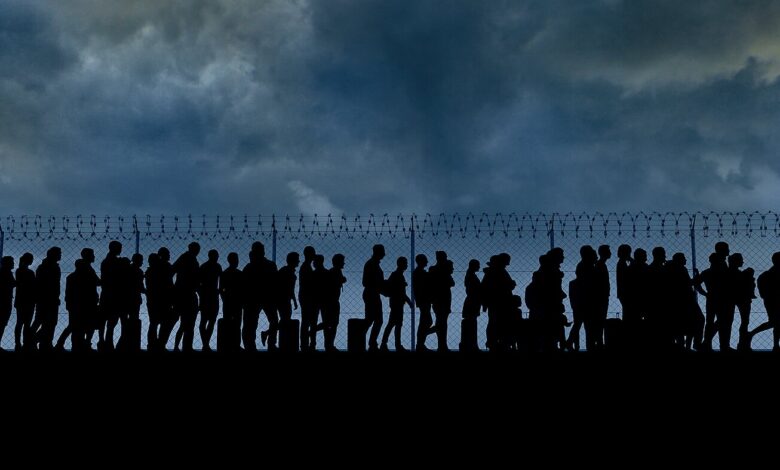The Economic Costs of Illegal Border Crossings

Illegal border crossings into the United States carry significant economic costs, not just for the government but for local communities and the economy at large. These costs stem from the resources required to enforce border security, as well as the long-term financial impact on public services, healthcare, and education systems.
1. The Cost of Border Enforcement
The U.S. government allocates billions of dollars each year to secure its borders and prevent illegal crossings. This includes the costs associated with personnel, surveillance technologies, border infrastructure (such as fences and walls), and detention facilities. Border enforcement agencies, such as the U.S. Border Patrol and Immigration and Customs Enforcement (ICE), are tasked with preventing illegal immigration and apprehending individuals who cross the border unlawfully.
The cost of border enforcement has skyrocketed in recent years, with the Trump administration’s emphasis on building a wall along the southern border driving up spending. While proponents argue that border walls and heightened enforcement are necessary for national security, critics point to the high costs associated with these measures. They argue that funds could be better spent on addressing the root causes of migration and improving the immigration process.
2. The Cost of Detention and Deportation
The cost of detaining individuals who attempt to cross the border illegally is another significant economic burden. Immigration detention facilities require substantial funding for staffing, infrastructure, and day-to-day operations. The government spends millions each year to house and care for individuals in detention centers, many of whom have been apprehended for crossing the border illegally.
In addition to detention costs, the deportation process itself is costly. Deporting individuals requires significant resources for transportation, legal proceedings, and coordination between federal agencies and foreign governments. The costs of deportation can add up quickly, particularly when individuals are held in detention for extended periods before being returned to their home countries.
3. The Impact on Local Communities
Local communities along the U.S.-Mexico border are often at the forefront of the economic costs associated with illegal immigration. Border communities experience the strain of providing services to migrants who cross the border illegally or seek asylum. These services include healthcare, education, law enforcement, and social services.
Hospitals, schools, and social service agencies in border regions frequently report an increase in demand for services from undocumented immigrants, putting additional pressure on local budgets. This can lead to overcrowding in schools, longer wait times in hospitals, and greater demand for public assistance programs. While some argue that undocumented immigrants contribute to the local economy by working in low-wage jobs, others believe that the financial strain on public services outweighs these benefits.
4. The Costs to the National Economy
Illegal immigration also has broader economic implications for the national economy. While undocumented immigrants contribute to the U.S. economy in various ways, including filling labor shortages and supporting industries like agriculture, construction, and hospitality, their presence can also impose significant costs.
One of the main economic concerns is the burden on public services. Undocumented immigrants often use healthcare, education, and social services without contributing to the tax base. While some argue that they contribute to the economy through work and taxes, others contend that the costs of providing services to undocumented immigrants outweigh these contributions.
5. Addressing the Economic Costs
To mitigate the economic costs of illegal border crossings, some advocates call for comprehensive immigration reform. This could include creating more legal pathways for immigration, improving the efficiency of immigration processes, and addressing the root causes of migration, such as violence and poverty in migrant-sending countries.
By reforming the immigration system, the U.S. could reduce the number of individuals attempting to cross the border illegally and create a more orderly process for managing immigration. Additionally, investing in border security technologies, such as drones and sensors, could be a more cost-effective approach than relying on physical barriers.
6. Conclusion
Illegal border crossings into the U.S. carry substantial economic costs, from the expense of border enforcement and detention to the strain on local communities and national services. While these costs cannot be entirely eliminated, addressing the root causes of illegal immigration and implementing comprehensive immigration reform could reduce the economic burden on the U.S. government and local communities. The focus should be on creating a more efficient, humane, and sustainable immigration system.





